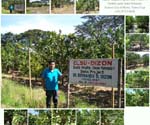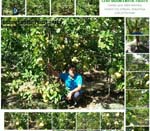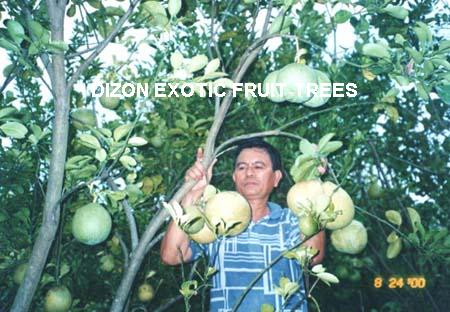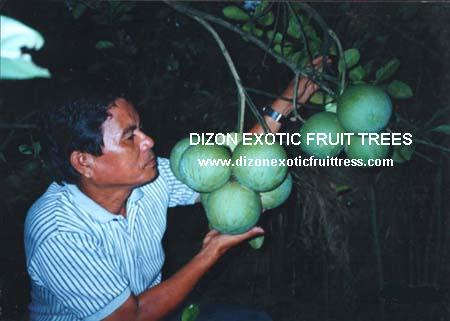|
Varietal Selections |
|
|
 |
 |
 |
|
CLSU-DIZON |
|
PROJECT |
 |
|
|
|
The Philippine Star, Business,
Sunday, August 11, 2002 |
|
Big harvest of
money in pummelo |
|
by Ramon Ma.
Epino |
|
|
|
There are
many good reasons why farming pummelo is a winner anywhere
in the Philippines. Through the studies and actual
demonstration of pomologist Bernardo O. Dizon, the top fruit
money maker in Mindanao can now be grown successfully in
Luzon, too, and many other places. |
|
More than that, it has tremendous export potential.
With its long shelf life - more than a month under
ordinary room temperature - the world's markets
beckon to be reached its exotic taste still as fresh
as when the fruits are gathered. For that quality,
the fruits could be shipped to destinations without
spoiling; that would make it cheaper for bigger
profits.
A close look at a one-hectare orchard planted to 400
plants at intervals of 5 x 5 meters |
 |
|
|
can gross P160,000 (10 kilos x 400
trees x P40/kilo) on sixth year; production expenses is 20
percent. This is for single rootstock. |
 |
On the other hand, with double rootstock, more
yields can be realized. Continuously fruiting,
harvest frequency is twice annually. On the second
year, the gross is the same as the third year gross
of the single rootstock; on the 10th year and
onwards, the gross runs up from P2,400,000 (150
kilos x 400 trees x P40/kilo) to P3,200,000 (200
kilos x 400 trees x P40/kilo).
Pummelo can adapt itself to the lowland (see level)
area like the Quezon City
|
|
and in Naic, Cavite where Dizon conducted experiments on Davao
pummelo and in the rice field area of Central Luzon State
University in the Science City of Muñoz, Nueva Ecija. It has
proven itself productive in the highland area of Mount Banahaw in Lucban, Quezon. It can be planted too in rice
dikes (pilapil) and fringes of the farm to augment farmer's
incomes.
For this agriventure, Magallanes Davao Pummelo is
recommended as a commercial crop with excellent eating
quality. According to Dizon, it is best to use the native
pummelo (suha or lukban) seedlings as rootstock for
grafting, this would redound to prolonged productive life.
The right variety and application of fertilizer at the
right time is important. For the young trees, nitrogen and
phosphorous are a must, with the latter needed for the
production of an extensive root system.
Fertilization should be a combination of chemical and
organic fertilizers. During fruiting time, there should be
more potassium and trace elements in the fertilizer to make
the fruits sweeter and juicier. These trace elements are the
micronutrients such as boron, manganese, zinc, iron and
others. Unlike the Magallanes Davao pummelo the native suha
or lukban, is sour and bitter.
Low-growing pummelos are not only easier to spray with
insect control, it is also stronger against strong winds
during typhoon.
Farmers, however, are well advised to dedicate
themselves to the care of the plants like protection from
pests and diseases for prolonged productivity. With that in
mind, orchard growing - as in pummelo - will be a rewarding
enterprise. |
|
|

